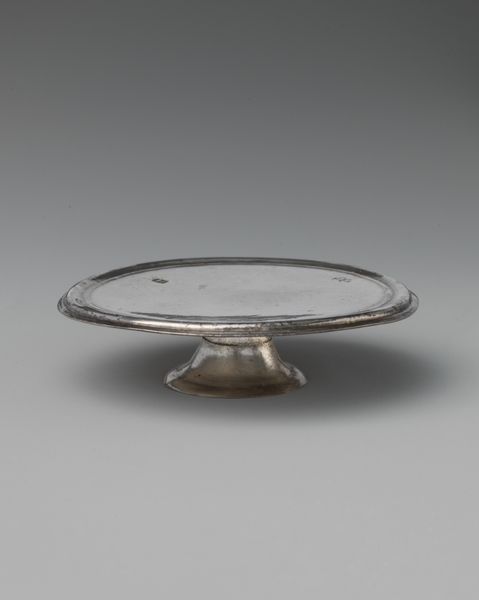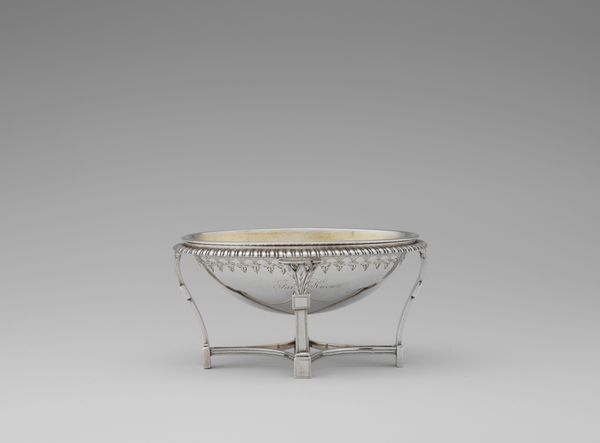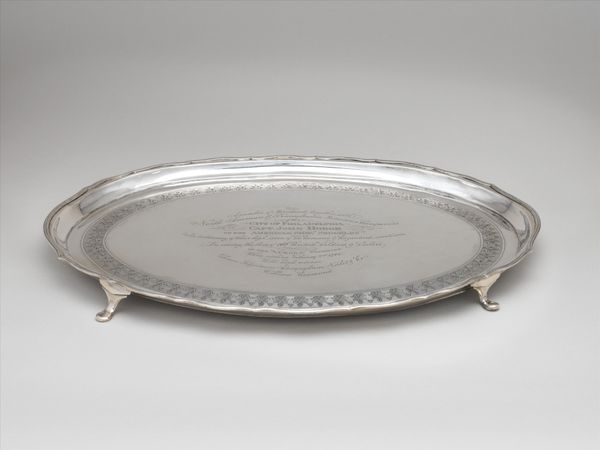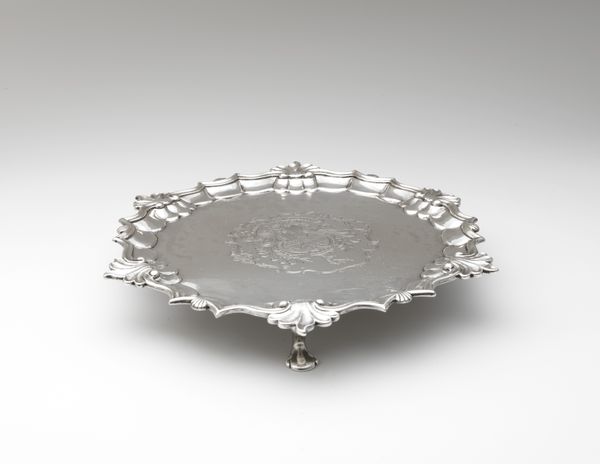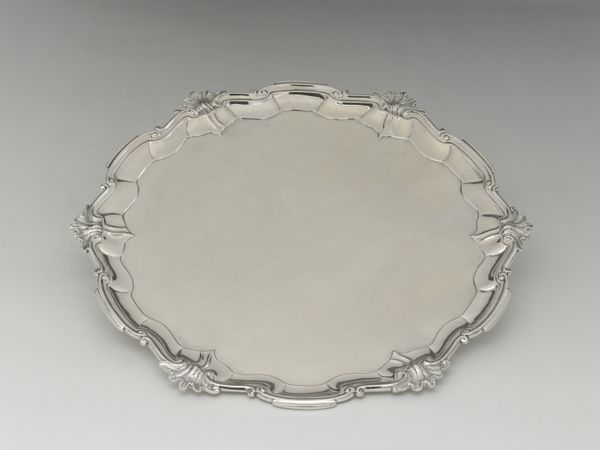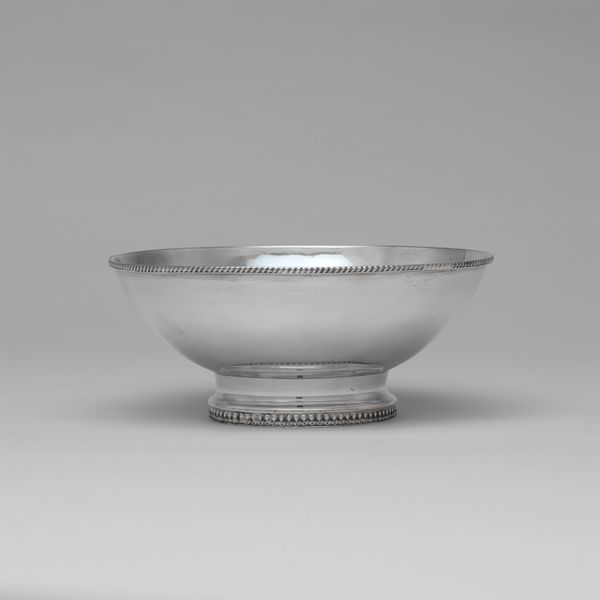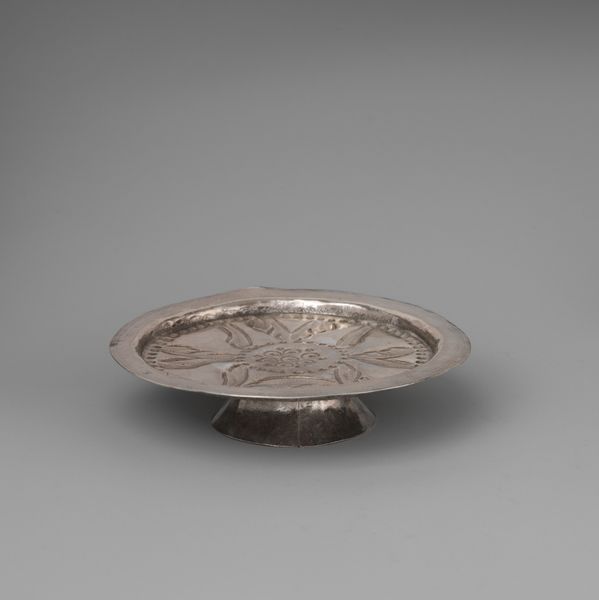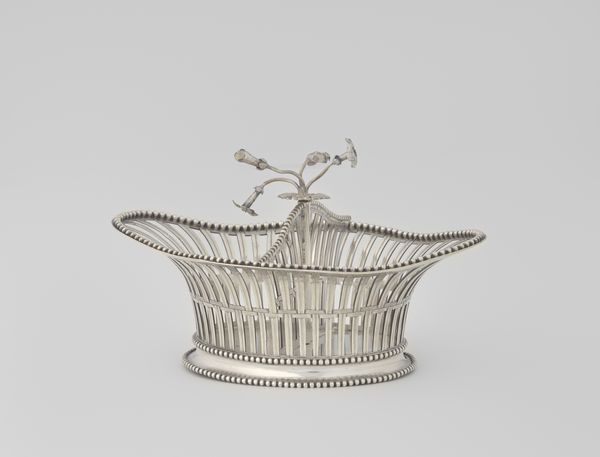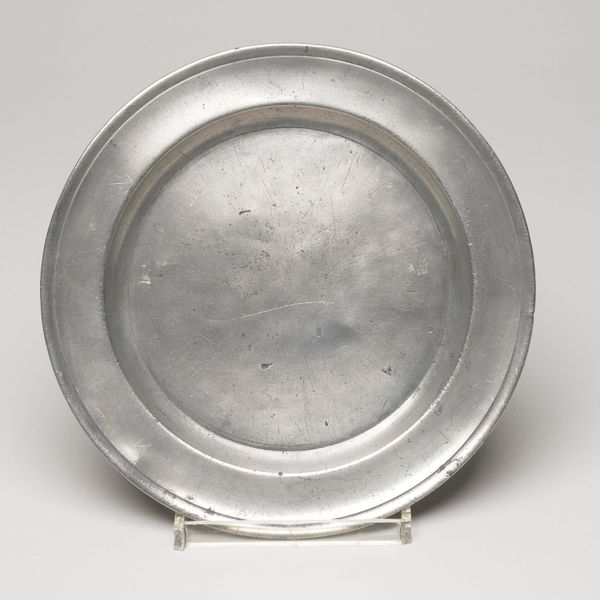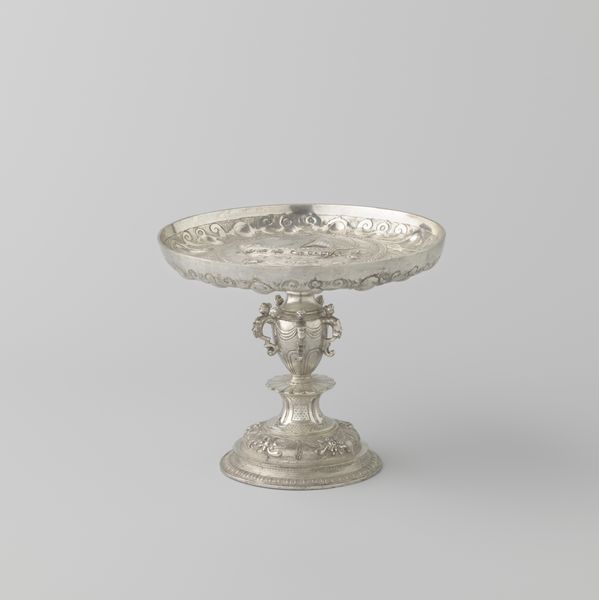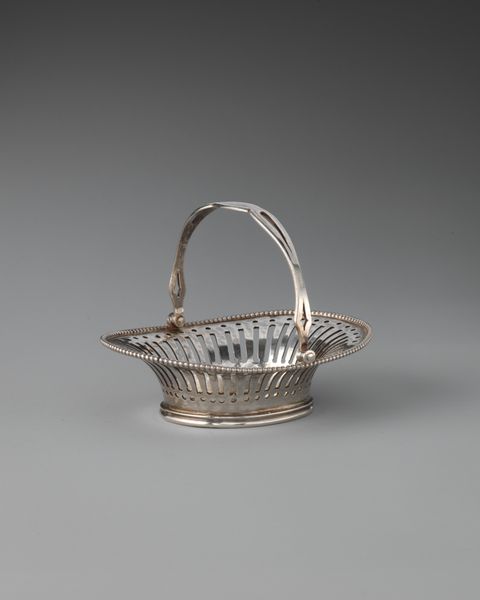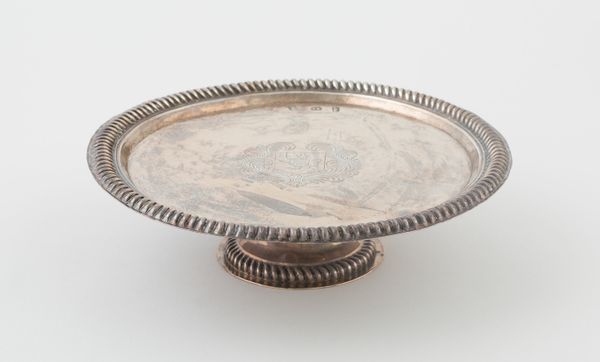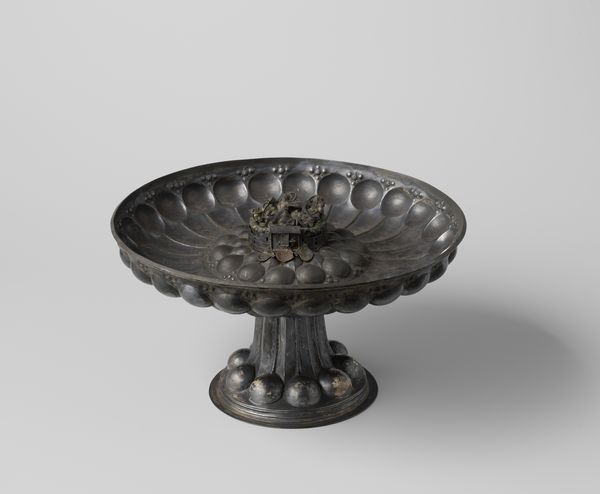
silver
#
silver
#
decorative-art
Dimensions: Overall: 2 5/16 x 9 1/8 in. (5.9 x 23.2 cm); 10 oz. 9 dwt. (325.6 g) Foot: Diam. 3 3/8 in. (8.6 cm)
Copyright: Public Domain
John Coney crafted this silver footed salver in the late 17th or early 18th century, a period when Boston was solidifying its status within the British Empire, yet also nurturing seeds of independence. As the first American-born silversmith, Coney operated in a society deeply stratified by class and colonial status. This salver, with its restrained elegance, speaks to the tastes of Boston's elite, eager to emulate European customs. Silver, as a material, signals wealth and power, reflecting the economic disparities inherent in colonial society. The salver form itself, used for serving food or displaying objects, suggests a culture of refinement but also of display – who had access to such luxuries and who did not? It invites us to consider the labor, likely enslaved, that contributed to the wealth that afforded such items. Think about how objects can reflect cultural aspirations but also historical realities of inequality and exploitation.
Comments
No comments
Be the first to comment and join the conversation on the ultimate creative platform.
